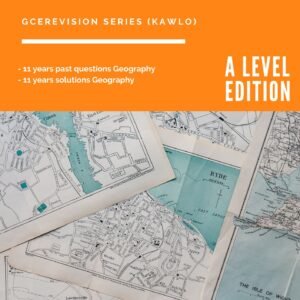Cameroon GCE advanced level June 2025 geology 2
Cameroon GCE advanced level June 2025 geology 2
Here are the extracted questions from the provided images:
Page 1
- (a) Briefly explain the origin of the universe.
(b) Give the significance of each of the following discontinuities:
(i) Conrad discontinuity;
(ii) Moho discontinuity;
(iii) Gutenberg discontinuity.
(c) Differentiate between the following pairs:
(i) Earthquake focus and earthquake epicentre;
(ii) Body wave and surface waves;
(iii) Seismograph and seismogram.
(d) What do you understand by the following geological concepts?
(i) Sea-floor spreading;
(ii) Plate tectonics.
- (a) Outline the symmetry elements of the holosymmetric classes of the cubic and orthorhombic systems.
(b) State the law of constancy of interfacial angles.
(c) Discuss the diagnostic physical properties, distribution in rocks and uses of the following minerals:
(i) Orthoclase feldspar;
(ii) Galena.
(c). Outline the factors that control the specific gravity of minerals.
- (a) Describe the different types of rocks that result from the progressive regional Metamorphism of shale.
(b) Outline a classification of faults based on dip values and the apparent relative movement of the faulted blocks.
(c) Describe and explain the formation of the following features:
(i) Inlier;
(ii) Dome.
- (a) Peridotite, dolerite and rhyolite are common igneous rocks. Discuss each of them under the following headings:
(i) Composition;
(ii) Texture;
(iii) Rate of cooling;
(iv) Field occurrence.
(b) Using examples, briefly describe the following:
(i) Placer deposits;
(ii) Supergene enrichment deposits.
(c) Outline the methods that can be used to prevent landslides.
Page 2
- (a) Explain how the following features are formed:
(i) Zeugen;
(ii) Ox-bow lake;
(iii) Sea stack.
(b) Describe and account for the origin of three sedimentary structures that can be used to deduce palaeo environments.
(c) (i) Outline the qualities of basalt that can make it useful for construction.
(ii) Discuss two types of springs.
- (a) Briefly discuss Graptolites under the following headings:
(i) Mode of fossilisation;
(ii) Evolutionary changes.
(b) With the aid of diagrams, describe the following types of unconformities:
(i) Parallel unconformity;
(ii) Heterolithic unconformity;
(iii) Angular unconformity.
(c) List and explain two factors that control the viscosity of magma.















